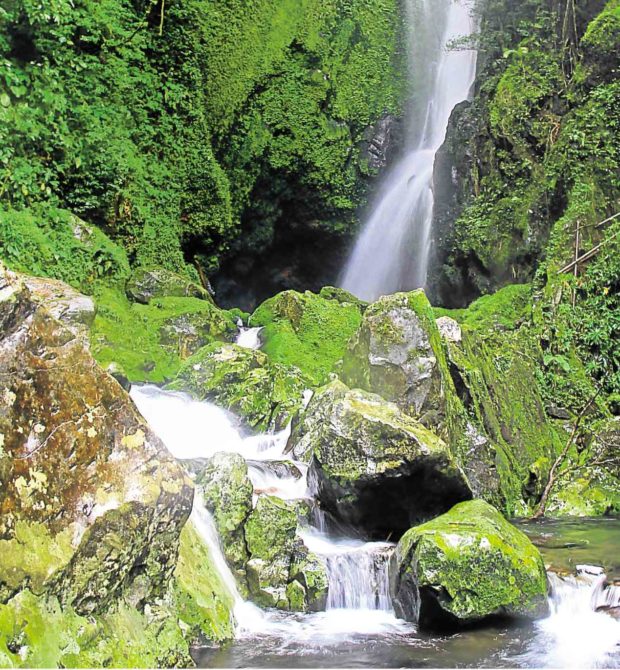Laguna’s hidden waterfalls

FALLS WITH TWO NAMES For Liliw town, this is Kilangin Falls but for adjacent Majayjay town, this is called Bukal. CONTRIBUTED PHOTO
SINILOAN, Laguna — Busloads of foreign tourists are frequently streaming to Pagsanjan town in Laguna, where they are picked up by small wooden boats to take them upstream to the most famous falls in neighboring Cavinti town.
Yes, the Pagsanjan Falls, also known as Cavinti Falls or Magdapio Falls, is the top natural attraction in the province, but there are equally majestic but less known falls that have been gaining popularity in recent years. Some are relatively easy to reach, while others have rough trails best taken by experienced mountaineers.
Visitors here can go to three falls in one go — Asul na Talon, Hagdang Bato Falls, Tulay na Bato Falls — all in this town. Access is through Trekkers’ at Kilometer 17 in the village of Magsaysay along the Siniloan-Famy-Infanta Road.
It is also a jump-off point to Kalawang Falls and Kabagan Waterfall Cavern.
Trekkers’ is actually inside the 10-hectare property of Luz Zaldivia, 79, a former land resources consultant. The waterfalls, though, are protected areas under Proclamation No. 1636, series of 1977, according to Zaldivia.
Article continues after this advertisementLittering visitors
Article continues after this advertisementTo reach the falls, hikers go downstream. In another take-off point at Kilometer 18, they go upstream.
Zaldivia said interest in the waterfalls had grown in the past decade. She laments, however, that some visitors litter the area.
“In Asul (na Talon), they dirty the place,” she said. “You cannot stop them. We pick up their trash.”
Local government officials plan to develop the area soon as part of a series of ecotourism projects, Zaldivia said. She cited nearby Macatad village, the jump-off point to the more popular Buruwisan Falls.
‘Eel’s tail’
One of the difficult trails leads to Buntot Palos, which literally means “eel’s tail.” It takes about two hours to reach the place, also known to trekkers as the “Hidden Falls” of Laguna, according to Raymund Diaz, 57, chief tourism operations officer of Pangil town.
Buntot Palos used to be accessed through the Pangil River Eco Park, which Diaz also manages. The officer left access and management of the falls to its two barangays—Balian and Natividad—so that they could derive income from tourism.
Farther downstream is the Ambon-Ambon falls seemingly carved between two cliffs and drizzling, hence its name. It is a 25- to 30-minute trek from the eco park.
“The water drops down to some rocks. Where the water falls, it splashes, so there are droplets bouncing off,” Diaz said. During the rainy season, he said, the droplets fall twice as fast.
Sharing falls
Liliw and Majayjay towns share a natural spring and waterfalls but call it differently—Kilangin Falls (Liliw) and Bukal Falls (Majayjay). The crystal-clear blue waters are surrounded by crimson rocks wrapped in green moss.
Just this year, the provincial board ruled that Kilangin is under the jurisdiction of Liliw under Resolution No. 106, series of 2017. The falls, though, is more accessible through Majayjay than Liliw, and most tourists still get there through Majayjay, according to town council member Efren Bituin.
It takes only 45 minutes to get there over a distance of four to five kilometers from the town hall, Bituin said.
Through Liliw, it is a long, steep trail, but more scenic, said Mary Maileen Sulibit, town administrator and tourism officer. “You will pass by vegetable plantations,” she said.
Laoyan Bacasen, 75, works as a tour guide, leading tourists through a downhill jungle leading to the barely seen waterfalls in Siniloan town. A native of Benguet province, he spends half a day trudging through the trail from Asul na Talon, Hagdang Bato Falls, and Tulay na Bato Falls and back.
“It was tiring,” Bacasen said, gulping down buko juice. Still, he managed to smile.